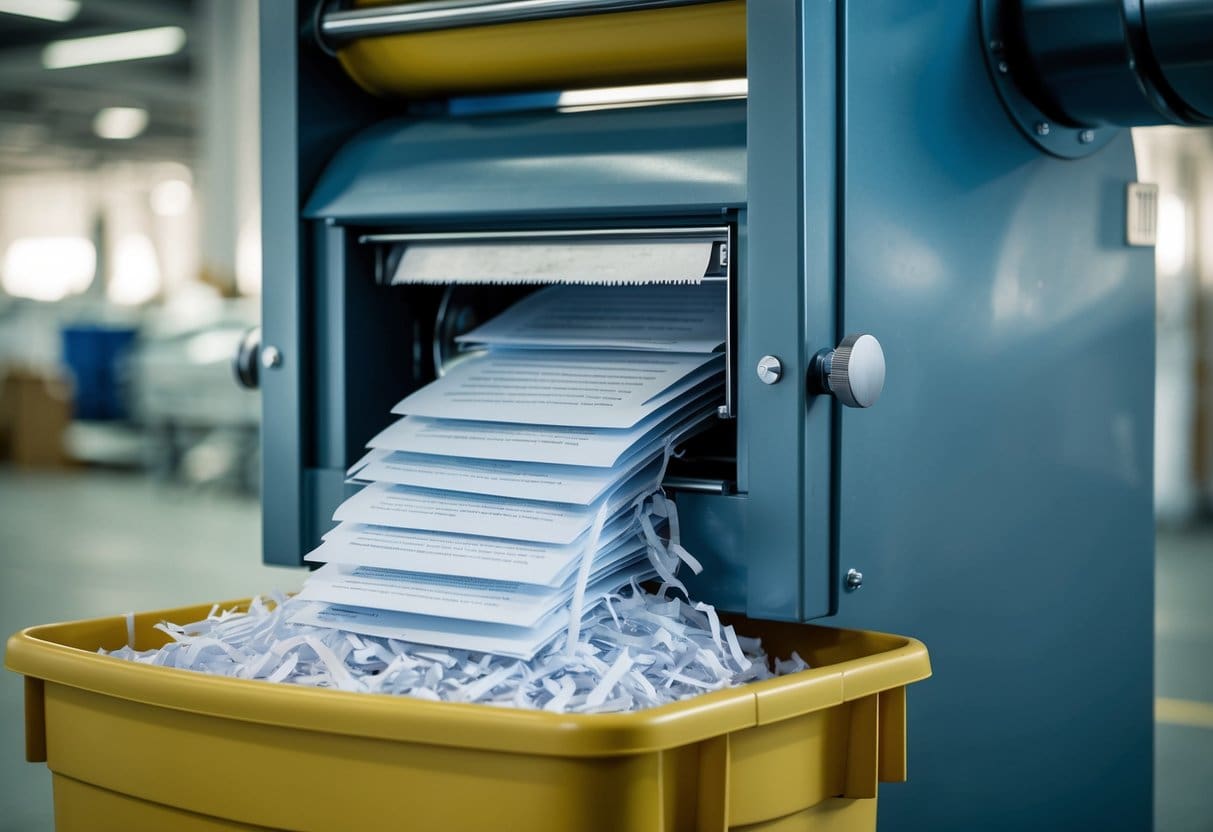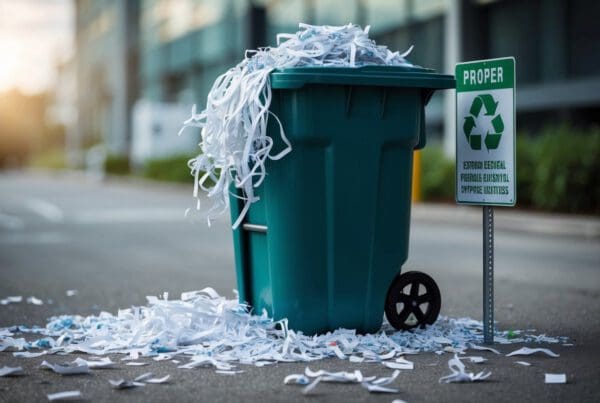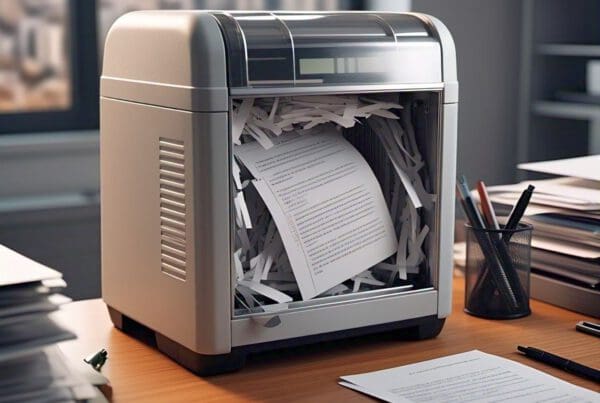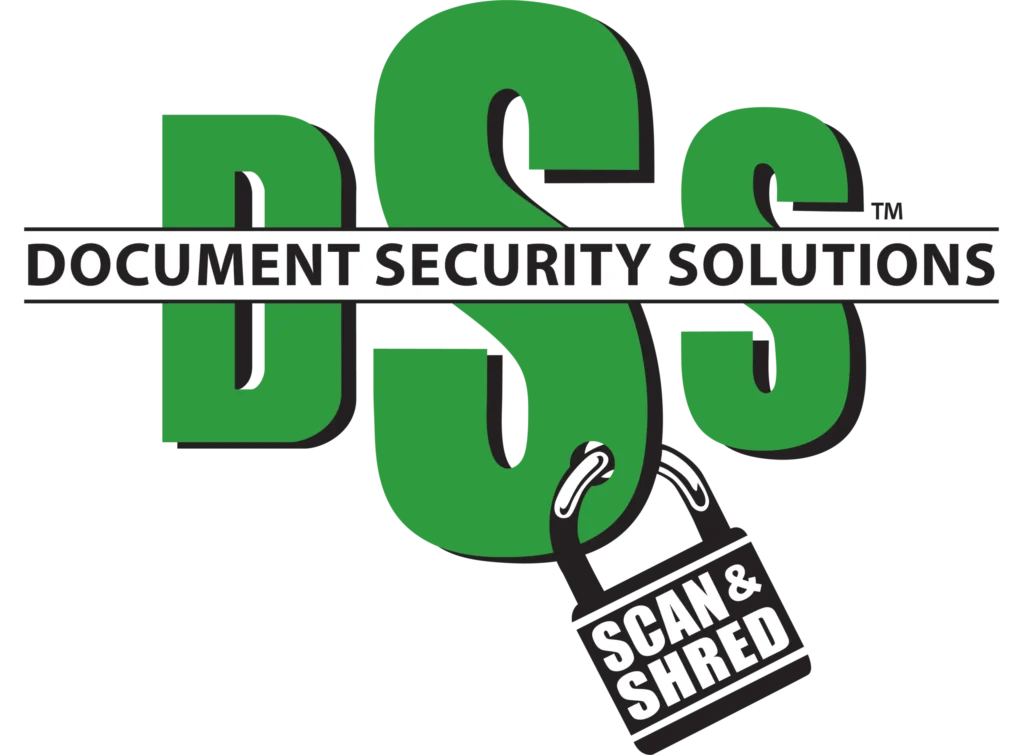Overview of Paper Shredding Services

Paper shredding services are essential for businesses and individuals who need to dispose of confidential documents safely. These services help prevent identity theft and maintain privacy by destroying sensitive information.
We offer different types of shredding services. Document shredding can be done through mobile or on-site shredding services, where a truck comes to your location. This method allows you to watch the shredding in real-time, providing added security and peace of mind.
For those who prefer not to watch the shredding process, offsite shredding is available. Documents are collected and securely transported to a facility where they are shredded. This option is often more cost-effective for large volumes of documents.
Drop-off shredding is another alternative. We can bring our documents to a local shredding company or a designated drop-off point for shredding. It’s a convenient option for smaller amounts of paper.
Scheduled shredding services are ideal for businesses with regular shredding needs. We set up a routine service that fits our schedule. Lockable bins are usually provided, ensuring information safety until the shredding time.
Professional shredding services ensure that all documents are destroyed thoroughly. We use high-quality shredding methods to ensure compliance with privacy laws and regulations. Whether you need a one-time purge or regular service, there’s a solution that will meet our needs.
Analyzing the Costs of Shredding Services

When exploring the expenses related to shredding services, several factors influence the cost. We will discuss how service type, volume, frequency, and extra services play a role in determining pricing.
Factors Influencing Shredding Service Costs
The cost of shredding services depends on multiple elements. Location and company size impact rates. Urban areas might have higher fees than rural areas due to overhead costs. The type of materials shredded, such as paper or hard drives, also affects pricing. Some services charge per pound, while others have flat fees. Security needs and compliance requirements can increase costs too.
Comparing On-Site and Off-Site Shredding Expenses
On-site and off-site shredding have different pricing structures. On-site shredding involves trucks coming to our location. It tends to cost more due to transportation and immediate processing. Off-site shredding, where documents are removed and shredded at another location, might be cheaper. It depends on the need for witnessing the shredding process.
| Service Type | Avg. Cost per Pound |
|---|---|
| On-Site | $0.10 – $0.25 |
| Off-Site | $0.05 – $0.20 |
Understanding Volume and Frequency Impact on Price
The volume of documents and frequency of service can greatly alter costs. Larger volumes often qualify for discounts, lowering the price per pound. Frequent shredding also provides opportunities for rate reductions. Monthly or weekly services might be cheaper per visit compared to infrequent use. Businesses need to balance costs with their data security needs.
Additional Services and Their Fees
Additional services like document pickup, certificates of destruction, and expedited shredding can add to the document shredding cost. Pickup services are common for businesses that cannot deliver documents. We should consider these extras when budgeting for shredding. Each added service has a price, affecting the overall expense for shredding services.
Security and Compliance Considerations in Shredding

When it comes to paper shredding, we must ensure both security and compliance. Handling confidential documents is serious, and shredding them safely protects sensitive information. We need to follow security protocols and adhere to important laws like HIPAA and FACTA.
Certification and Secure Shredding Protocols
We prioritize using secure shredding protocols to maintain the confidentiality of documents. A certificate of destruction is important as it verifies that materials have been properly shredded and disposed of. This helps us trust that our sensitive information doesn’t fall into the wrong hands.
We also rely on certification to ensure the shredding service follows strict security measures. Certification proves the service meets industry standards for secure shredding. Regular audits and following best practices are part of these security protocols. Protecting our data is vital, and proper certification is a must.
Legislation Compliance: HIPAA and FACTA
Compliance with legislation such as HIPAA and FACTA is necessary in confidential document destruction. HIPAA protects health information while FACTA safeguards consumer information. When we shred documents containing this data, following these laws prevents unauthorized access.
We should choose shredding services familiar with these compliance requirements. They should have a clear process to guarantee adherence to HIPAA and FACTA standards. Proper compliance ensures that businesses avoid legal penalties. Following these laws is crucial to safeguard sensitive information and maintain trust with our customers and partners.
Selecting the Right Shredding Service Provider
Choosing a shredding service is about more than just cost. It’s crucial to consider who you can trust with sensitive documents and whether they use efficient equipment.
Assessing Reputation and Customer Reviews
Evaluating a provider’s reputation helps us feel confident about the safety of our documents. Start by checking online reviews and testimonials. Are former customers satisfied with their services? Word of mouth can also be a valuable resource.
Assess their track record for reliability and customer satisfaction. Choose providers with industry certifications, ensuring they meet standards for data destruction. By prioritizing reputation, we gain peace of mind that our documents are in trusted hands.
Evaluating the Efficiency of Shredding Equipment
The quality of shredding equipment directly impacts document security. We should investigate whether a provider uses modern and secure equipment. High-quality machines ensure complete destruction of sensitive files.
Consider the shredding methods they use. Cross-cut shredders provide better security than strip-cut ones. Location can also affect machine efficiency, with on-site shredding offering more control over the process. Reliable equipment ensures prompt service, saving us time.
Staying informed about these aspects helps us choose a provider that meets our document destruction needs efficiently.
Protecting Against Information Breach Risks
Identity theft is a serious concern. It is crucial for us to safeguard our personal and business information. Paper shredding can help by securely destroying sensitive documents.
Why Choose Paper Shredding?
Our goal is to protect against information breaches. By using paper shredding, we reduce the chances of confidential data falling into the wrong hands.
Consider the Quantity
The quantity of documents we need to shred matters. More documents may require professional shredding services. We can choose a service that matches our needs based on how much waste we produce.
Shredding Methods
- Cross-cut: Shreds paper into small pieces, providing higher security.
- Strip-cut: Cuts paper into long strips, suitable for non-sensitive information.
Key Features to Look For
- Secure bins: Use locked bins to store documents before shredding.
- On-site vs. Off-site: Decide if shredding should happen at our site or transported securely.
Preventing Identity Theft
By shredding documents, we protect against identity theft. It is vital to shred any materials with personal or sensitive information.
Common Items to Shred
- Financial records
- Medical records
- Expired credit cards
Making informed decisions about shredding can help protect our confidential information and reduce the risk of breaches.





